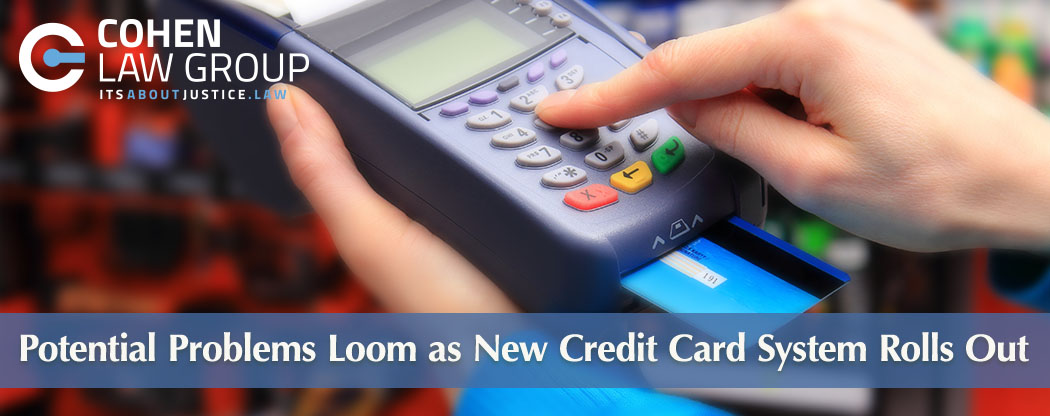Potential Problems Loom As New Credit Card System Rolls Out
Today, October 1st is the day that is supposed to revolutionize credit card purchasing. To find out if you’re ready, grab your wallet. Next, take a look at your credit card. It has a magnetic strip on the back, but it might also have a different feature: a small chip. If your card has one of those, it is part of the EMV revolution, and you’re ready to use it.
The purpose of the card’s chip is to increase security and make it more difficult for fraudsters to successfully counterfeit cards. Today’s transition deadline might not be as smooth as the banks and retailers had anticipated. To start with, while 120 million EMV cards have been issued, the Smart Card Alliance estimates that by the end of 2015, there should be 600 total cards issued. To say there is a long way to go is an understatement.
As with any new technology that’s being rolled out, there will be complications, and in the case of EMV cards, those complications go beyond just making sure everyone has theirs.
1. Longer Lines
Expect the lines at checkout counters to be a little longer as people who might not have known until today that their card is equipped with EMV chip as they learn their way through the process. In addition, use of the new chip device does not work as quickly as the magnetic strip reader. We’re used to waiting a few seconds after swiping our card for authorization to process, but with some of the EMV card testing, customers have sometimes waited as many as 20 seconds for the card to process.
2. Forgetting Your Card
The new chip technology requires actually inserting your card into the reader machine for processing. With the longer authorization time, it’s easy to let it slip your mind that your card is still inside the machine, and walk off without it.
3. Your Card Might Not Work Overseas
In other countries that have already implemented EMV technology, customers confirm their purchases with the use of a 4 digit PIN, like we do with our debit cards. Most U.S. EMV chip cards will not have PIN technology initially, requiring a signature. Card readers in those countries with PIN technology will likely not have an option to confirm a purchase with a signature. So without a PIN or a way to sign for a purchase, the cardholder might be left with no options.
4. Limited Security
This technology is coming hard and fast to retailers and banks, and that comes with a steep learning curve when it comes to security and protection. Without the protection of a PIN, a simply possessing the card can still enable a thief to use it.
Additionally, the cards will not come with any additional protections for online transactions, so all the risks of shopping online with your previous credit card still remain.
5. Online Fraud Might See An Increase
Once security catches up and cardholders can reasonably make in store-purchases with the safety that the card makers intended, online fraud will be the easier, more attractive option for online fraudsters. When the EMV cards were introduced in Europe, they saw a 40 percent increase in online fraud.
As the new technology rolls out, be sure to have patience that the counters as we all learn a new system, know about where you’re traveling with your card, but most importantly, keep a close watch on your statements and be careful with how and where you shop online.
DISCLAIMER: This website is for informational purposes only and does not provide legal advice. Please do not act or refrain from acting based on anything you read on this site. Using this site or communicating with Cohen Law Group through this site does not form an attorney/client relationship. This site is legal advertising. Please review the full disclaimer for more information by clicking here.

